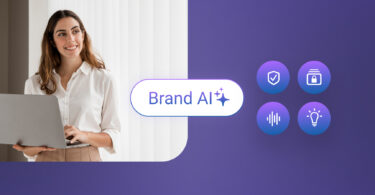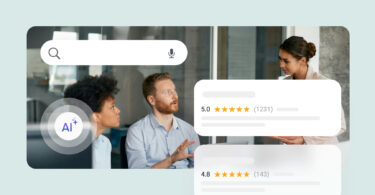Why do performance marketers need to embrace machine learning optimization? Performance marketers can get better results by leveraging machine learning tools from Google and Facebook. At Birdeye, we have seen major reductions to customer acquisition costs and 3x to 4x better close rates (for our worst performing campaigns). The better your marketing-fu, the better the results!
Machine learning 411 for performance marketers
If you buy or manage paid digital lead generation, you know it can be a complex process. Machine learning isn’t magic — it’s no less complex — it’s just the results can be astounding. At Birdeye, we have seen improvements in our best and our worst campaigns. The trick is using what Google calls offline conversions and what Facebook calls deep-funnel conversions.
One outstanding result we obtained was increasing the spend on some of our best search campaigns with linear results; overall results like costs per deal, and the percentage of spend to bookings increased at the same percentage as the spend. Most digital marketers know typically scaling spend results campaigns that start to underperform the more you spend.
But those aren’t the only results we saw.
Bad campaigns work 3x better
There aren’t any bad campaigns, just campaigns we haven’t figured out how to optimize. When pushing for lead generation we often put the majority of our efforts into those campaigns that produce strong results. With minimal effort, I was able to turn an underwhelming retargeting effort into producing 3x to 4x the results. I was able to increase the spending, lead generation, and booking (we’ll go into more detail about this below).
I partnered with an algorithm because JD told me to. JD Prater, digital marketing expert, PPC Show co-host, and Quora evangelist said it best. “We can define the inputs and the output (the results) and let machine learning get the best results.” That was a few years ago, and today it’s truly possible. What you have to do is work really hard to imagine the best possible inputs and outcomes.
How I made a poor campaign perform
This article shouldn’t be a tease, so here are some real-world results from that retargeting campaign I mentioned; it’s a paid social campaign.
I ran a retargeting campaign for 175 days (July 1, ‘19 to Dec 22, ‘19). On Dec 23 we switched it to deep funnel optimization. The results confirm it’s a great time to be alive! Note: all the terms are defined at the end.
I was about to scrap this retargeting campaign (and rebuild it from the bottom up). However, just by changing the conversion goal to a deep funnel event, I moved the needle. I really didn’t have much to lose (except my budget, my honor, and my dignity). The deep funnel event I picked was a sales stage linked to our Salesforce Data Cloud (SFDC).
39 days of testing
What you can see below are my results after 39 days. In 39 days I had spent roughly ⅔ of what we had previously spent (in 175 days) but only ⅓ of the leads. Yes, the cost per lead (CPL) nearly doubles. Lead quality improved by 20%, and the acquisition (CAC) cost was reduced by 3x. ML isn’t just about spending more money, it’s spending more on the right targets!
| Retargeting Comparison | ||
| Compared to 175 (July -Dec) | 39 Days | |
| Leads Per Day | 2x | |
| Leads | 1/3 | |
| Spend | 2/3 | |
| Spend Per day | 3x | |
| CPL | nearly 2x | |
| % Quality | 20% better | |
| Opps | More | |
| CPO | way lower | |
| CAC | 3x less | |
| Lead to Close | major provement | |
| Total ACV | Increased |
56 days of testing
The initial 39-day test provided data from multiple sales cycles — based on those results I made a small increase to spend. No other adjustments were made:
At the 56-day mark, the spending was equal to the prior 175-day period. The campaign was generating more leads per day — the daily spend was up 3x. Note that lead quality dropped between the 39-day and 56-day snapshots. The really low Opportunity Cost (CPO) we saw at 39 days had increased but only marginally. But there was also golden news: the CAC was now 4x lower, and the overall value was increasing.
| Retargeting Comparison | ||
| Compared to 175 (July -Dec) | 56 Days | |
| Leads Per Day | 2.5x | |
| Leads | 1/3 | |
| Spend | equal | |
| Spend Per day | 3x | |
| CPL | 1.5x | |
| % Quality | 15% better | |
| Opps | More | |
| CPO | Increasing but far lower | |
| CAC | 4x less | |
| Lead to Close | even better | |
| Total ACV | 3.6x value |
68 days of testing
At the 68-day mark, I got very excited. Ok, I’m always excited! Our profession had just lived through increased auction pricing and record-setting political campaign spending and yet my retargeting campaign just got better and better.
It’s important to know not every KPI improved yet the bottom line reached new heights. Our CAC and total contract value (ACV) respectively down 4x, and up 4x. However, lead quality continued to drop, and CPO marginally increased. We were spending more than ever and generating more leads, and deals than ever.
| Retargeting Comparison | ||
| Compared to 175 (July -Dec) | 68 Days | |
| Leads Per Day | 3.3x | |
| Leads | equal | |
| Spend | more | |
| Spend Per day | 4x | |
| CPL | marginally lower than before | |
| % Quality | 11% better | |
| Opps | More | |
| CPO | Increasing but far lower | |
| CAC | 4x less | |
| Lead to Close | slight drop | |
| Total ACV | 4x more value |
Optimizing for ML
It’s an inside joke within the paid digital space that folks love their complex manual bid optimizations — at the very least, I hope I have shown that for campaigns that are not really worth that type of effort — deep optimization goals can really help (when combined with AI or machine learning). It’s not just setting those goals — it’s using what may be the two most advanced AI systems (Facebook’s and Google’s)
There are plenty of real-world digital marketing skills that are needed here, that is why at the beginning of the article I said, “the better your skills the better the results with ML.” The most skilled digital marketers are going to get the best results. That’s because deep funnel optimization is effective but it isn’t easy or “childproof.”
ML optimization is complex and in some ways harder — it’s just that the results speak for themselves! Results like greater bookings for less spending, or more high-quality leads; the results can be whatever you wish for (as long as it happens within the attribution window)!
Testing is often our only real tool. In the early 90s when I started researching the future of advertising, I always envisioned that the systems that we buy on would also be the systems we use to test on. Today, that’s our reality. Performance marketers can expand what they test.
Yes, you may be wary about too many tests, or even using an AI tool, especially from a smaller vendor. AI/ML tools need a nearly endless supply of raw data↥. My recommendation is, “Bet on Google and Facebook to have enough data, and the people and systems to use it. Bet on them!”
Why machine learning optimization is complex
It’s complex in part because we (as performance marketers) are inviting an algorithm to partner with us. The partnership is real; it’s a two-way street. At the same time, understand that algorithms are like a savant — they are very good at performing a very narrow range of tasks. We have to get good at instructing them, as JD said, “Control the inputs and outputs.”
Machine learning is like a magic wish. In movies and fairy tales, we are taught to be careful if we are ever offered three magic wishes. Working with an AI is more or less the same. If you tell it you want a lot of cheap leads, that’s what you will get. That’s why we need to go deep into our sales funnel and define meaningful goals. Make the right wish goal and you get rewarded!
Meaningful goals win
Facebook says if you expose any real-world goal to their system, their algorithm will find the results you need. Google basically says the same thing with slight differences. This often means that digital marketers need to really align with their sales teams, operations staff, and even with their finance team and pick a goal that is well-defined.
Go for purchase
Yes, it’s possible to just set the goal to be a purchase. That can work well for eCommerce or any business with a high volume of sales. For most companies, there isn’t enough purchases on a daily or weekly basis to properly train the algorithm.
Conversely, optimizing for a form fill sends too much signal. How many of your leads turn out to be bogus, or duplicative? Stop using form fills as your optimization event — stop sending so many false positives to the machine!
Delayed results are expected. The system I’m describing is awesome if you have short sales cycles like a few hours or a few days. Birdeye has an awesome product but our sales cycle is longer than the few minutes it takes to buy dinner from Seamless.
ML with its delayed results is like a Marshmallow Test for Marketers. It is critical to understand that Google and Facebook built systems that understand it can take days or weeks to close a deal. Warning: It can feel scary if you are used to seeing form fill counts rise every day when you switch over to a deep funnel goal and your conversion volume is lower, and delayed.
You might think the machine isn’t going to understand. You might think that the machine will spend too much money — it will not! Think of it like the famous Marshmallow test: Great things come to those who wait.
Your bidding skills still matter.
ML optimization tools on Google & Facebook will not spend too much money if your goals are grounded in real results. Make sure that you did set meaningful goals.
There are still bidding that you can set — this is one of the ways you can define the output. No one wants to pay $100 to sell a $1 stick of gum!
- Google Ads use tCPA or MaxConversions
- Facebook Ads use Bid/Target Cap or Lowest Cost
→ Listen to the PPC Show (Esp. #; I go into this in great detail)
Facebook vs. Google – they do it differently.
FB/IG and Google ads have different approaches to delayed results. Google gives up to a 90-day attribution period. You have to pick a goal (or goals) that can be completed within 90 days of the ad click event GCLID. Facebook is a bit more strict; deep funnel events need to be completed within 7 days of the click event (FBCLID) but you can send all sales events to Facebook allowing you to optimize or track view-throughs. On Google, you can only send events that have a GCLID.
Basic implementation plan (Best Practices)
- If you buy on multiple platforms you will want to plan the implementation together
- Your proof of concept code should focus on one of the platforms
- Your single source of truth will need to be exposed
- Plan for this!
- Work with your dev and operations teams
- This will work from nearly any CRM, PMS, or MAP
- Mapping Your Truth
- Each event you expose needs to be mapped into a standard or custom event on the Google or Facebook side
- I aligned higher funnel events with higher-level standard events
- I’ve aligned purchases with the purchase and the actual purchase price as the value!
- If there isn’t an actual purchase (e.g, a free app install) think about the best value to send — you get what you wish for!
- We are experts at API integration and chose to build our own but you can use pre-built integrations from Google or Facebook.
- Once you have a working proof of concept:
- You can begin testing it
- But you also have to create additional optimization events
- A working deep funnel optimization requires that you give yourself options
- If you have several points in your sales funnel that can work, expose all of them
- That’s part of the complexity: you need to test what works best.
- For different goals, and different campaigns you might not use the same conversion objective
- Remember, you get what you wish for.
- Value Is key
- Performance marketers love our manual bid adjustments
- Each system allows you to send a value (in any currency) along with the event
- This is part of controlling the inputs.
- Not only do you have to send the right event, you need to send the right values
- You will want to experiment here just as you have with keyword bids
- Value Suggestions
- It’s easy to make all events of the same type the same value
- Only do it if they are really the same; ask your sales team if you aren’t sure
- If you are sending the same value each time that’s deterministic data (e.g, it’s predetermined).
- Self-learning systems often do better with stochastic data — that is data that is random.
- If I was building a system for eCommerce I would use the cart value as one example.
- It’s easy to make all events of the same type the same value
- Once you have one platform working it’s time to link in others (e.g., SEM, then paid social)
- You are going to want to make sure that you are naming your events identically across all platforms so you don’t get confused later.
- Those are the highlights — If you want to know more please reach out to harryhawk@gmail.com.
Complex inputs yield amazing results
If you read through the implementation plan you can see that there are so many ways to experiment. Stop spending all your time thinking about manual bid adjustments. Start thinking about the interesting, novel, or unique signals that you can send in via deep funnel to optimize your ads.
Use your extra time to think about all the other things you should be doing like writing blog posts, conducting A/B tests, and listening to the PPC Show from AdStage.
Benefits of using Facebook’s deep funnel API.
Facebook uses its server-side events API for its deep funnel optimizations (API LINK). You can use the same API to send over pixel events — Facebook estimates that 10% of pixel events don’t get recorded. Their best practice is to send pixel events using your normal tracking script and using a server-side event (including the Browser ID, and Click ID (where it exists); they will record both and automatically throw away any duplicated data.
Facebook allows you to track 1x purchases or recurring subscriptions, and cancellations.
Benefits of using Google’s offline conversion API.
While Facebook only allows you to set a single conversion event per ad set, Google (API LINK) has Conversion Actions Sets (CAS). CAS is a collection of conversion events; that can be every event from the entire full or just selected events. If you use CAS, then it will optimize for the entire funnel. Which events should you add to a CAS? You are going to have to experiment. For each signal, you send think about its:
- Funnel Depth
- Value
- Volume
Summary
Paid marketing (search engine and paid social) is a complex process because there are so many variables. Plus nearly an infinite number of ways to control them. As performance marketers, it’s time to give up on most of your manual optimizations — there is still plenty of manual work to do, it’s just on a different level.
Imagine trying to drive a car and manually controlling the combustion, fuel flow, and valve timing. Now imagine a car that is helping to drive itself. Think about how now you can greatly increase your situational awareness — indeed even with a self-driving algorithm if you are a better driver you will get better results. The same is true for deep funnel optimization using offline events.
At Birdeye, we say we help businesses be found and chosen. ML optimization does the same thing for your ads. It helps ensure that qualified leads click on your ads and that your product or service is chosen.
| Terms | |
| Leads Per Day | The number of new leads per day |
| Leads | Marketing qualified leads in Salesforce |
| Spend | The total dollar value spent for the period |
| Spend Per day | The dollar value spent in a single day |
| CPL | Cost per MQL (Marketing Qualified Lead) |
| % Quality | A Birdeye is a multi-factor internal measure of lead quality |
| Opps | Opportunity stage reached; the lead has been picked up by the sales team. |
| CPO | Cost per Opportunity |
| CAC | Customer Acquisition Cost |
| Lead to Close | The number of new leads that purchased (closed). |
| ACV | Average contract value – the average income from each purchase. |
| ML | Machine Learning, similar or identical to AI. Machine Learning systems are able to train themselves (or be trained) to accomplish complex tasks |
| FBCLID | Facebook click ID; a unique ID is given for each ad clicked |
| GCLID | Google Click ID; a unique ID is given for each ad clicked |
| tCPA | Targeted cost per action; how you limit Google ads to product results at the cost/price you need. |
| MaxConv | MaxConversions. Use this if you want all the results you can but there isn’t a limit on price. You can also use this to “find” the market price and the lock-in at the level you want with tPA. |
| Lowest Cost | They don’t say this, but this is Facebook’s version of Max Conversions. This is highly effective with deep funnel goals. It can be used nearly the same way as MaxConv. |
| Bid Limit | Facebook: A hard limit on the max bid for a conversion goal. |
| Target Limit | Facebook: This sets an average price, allowing some lead generation to happen for a higher than the target cost as long as there are also less expensive leads to average out the price. |
↥ ML systems also need something called Ground truth; ground truth is data that has been parameterized for training. Self-driving car companies like Scale sell data that has been parameterized so that folks building self-driving cars can train against that data. They can see how the AI did, and compare that to what the human did. Not only do Google and Facebook have lots of raw data they have ground truth from the best marketers in the world (folks like you and me). If you are going to bet on AI/ML, bet on Google and Facebook!
Originally published


![[Feature image] Competitive intelligence tools- The definitive guide for 2025](https://birdeye.com/blog/wp-content/uploads/Feature-image-Competitive-intelligence-tools-The-definitive-guide-for-2025-375x195.jpg)
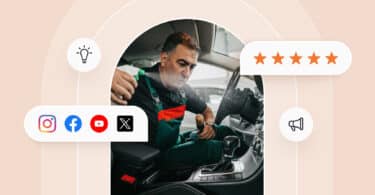
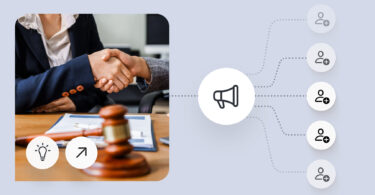
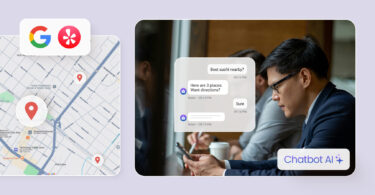
![[Feature image] The best AI tools for business in 2025 A complete guide for productivity, content, and growth](https://birdeye.com/blog/wp-content/uploads/Feature-image-The-best-AI-tools-for-business-in-2025-A-complete-guide-for-productivity-content-and-growth-375x195.jpg)
